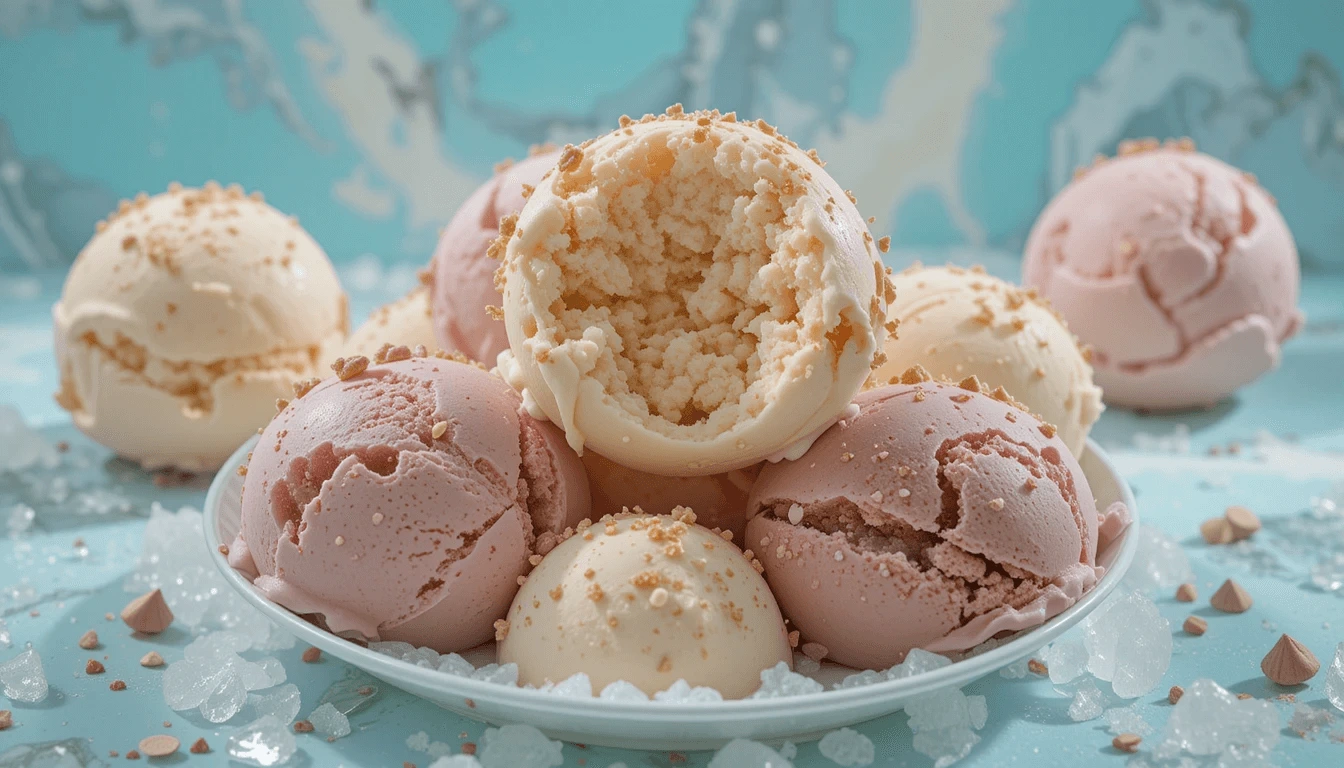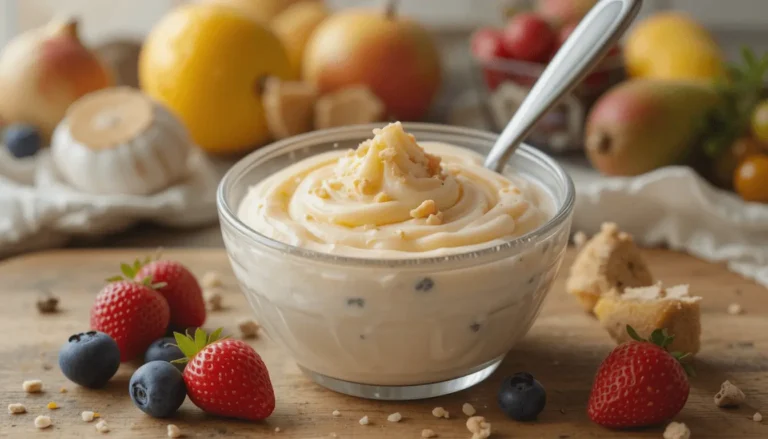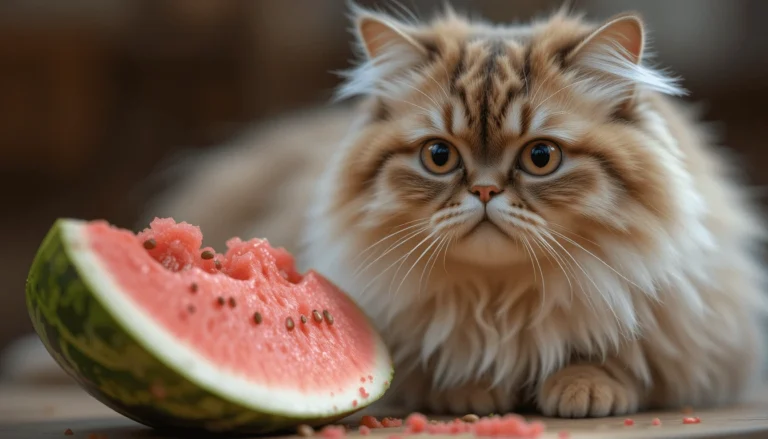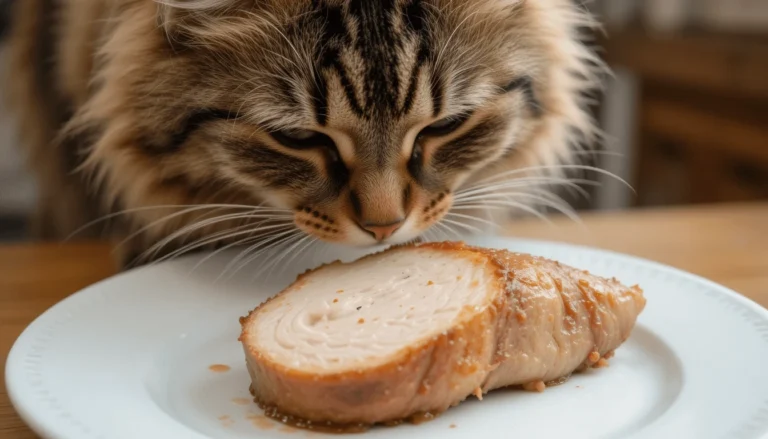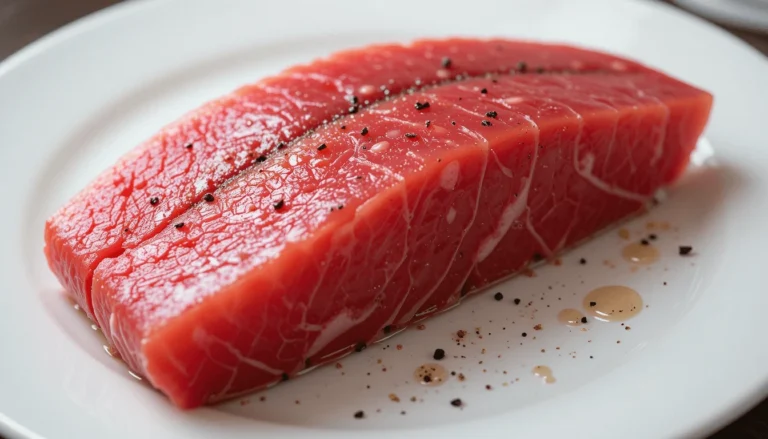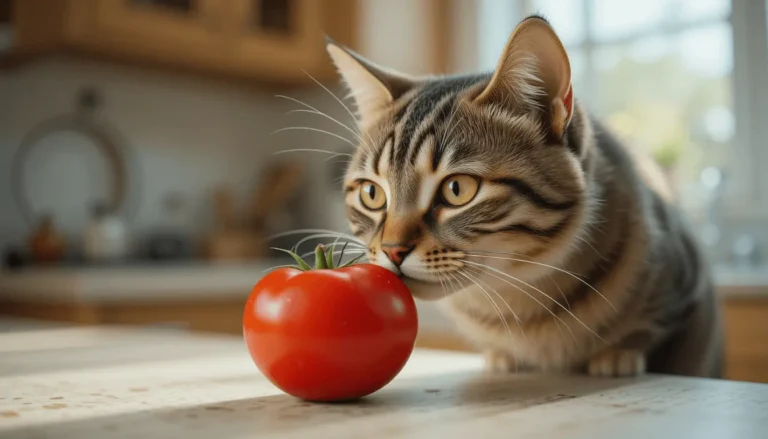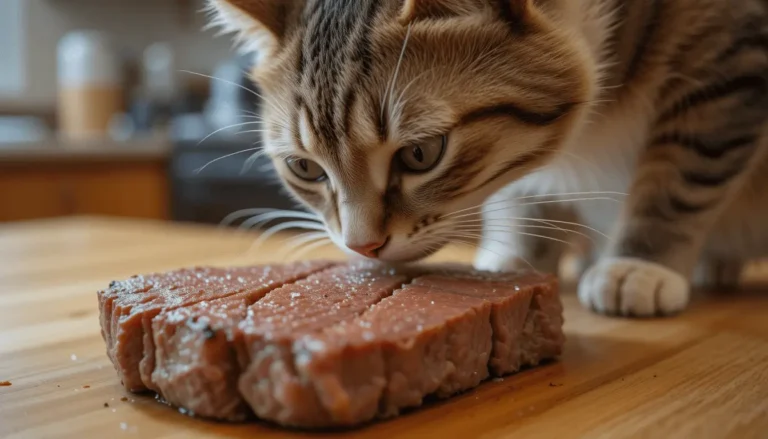Is Ice Cream Safe for Cats? What You Need to Know
Introduction
Picture this: It’s a hot summer evening, and you’re curled up on the couch with a bowl of creamy vanilla ice cream. Your cat, eyes wide with curiosity, slinks over and gives you that look—the one that says, “Can I have a lick?” Your spoon hovers mid-air as you lock eyes with your feline companion… then reality snaps back. Is ice cream safe for cats?
As tempting as it is to treat your feline friend, the truth isn’t so sweet. While cats may love the taste of dairy, their bodies aren’t built to handle it. From lactose intolerance to hidden toxic ingredients, that innocent scoop could spell trouble for your pet. In this guide, we’ll break down the risks, uncover safer alternatives, and help you make the best choices for your cat’s health—because their safety is worth more than a moment of indulgence.
Can Cats Eat Ice Cream? The Risks Explained
If you’ve ever wondered, “Is ice cream safe for cats?”, the short answer is: not really. While that creamy treat might seem harmless, the reality is far riskier for our feline companions. Let’s break down why.
Lactose Intolerance in Cats
First and foremost, most adult cats are lactose intolerant. Feline biology differs from humans – cats naturally stop producing sufficient lactase enzymes after kittenhood, making dairy digestion difficult. According to a study by the Cornell Feline Health Center, over 50% of adult cats experience digestive upset from dairy products, including diarrhea, bloating, and gas. Even a small lick of ice cream can trigger discomfort, making it a poor choice for your pet.
Sugar & Artificial Sweeteners (Xylitol Danger)
Next, let’s talk about sugar—a major hidden hazard in ice cream. Cats lack taste receptors for sweetness, so they don’t crave sugar like we do. Worse yet, some ice creams contain xylitol, an artificial sweetener that’s highly toxic to cats, as noted by the ASPCA. Even small amounts can cause seizures, liver failure, or worse.
High Fat & Calories
Finally, ice cream is packed with excess fat and calories, which can quickly lead to obesity in cats. The Association for Pet Obesity Prevention reports that nearly 60% of cats in the U.S. are overweight, increasing their risk for diabetes, arthritis, and heart disease. A single spoonful of ice cream might seem harmless, but over time, these treats contribute to serious health problems.
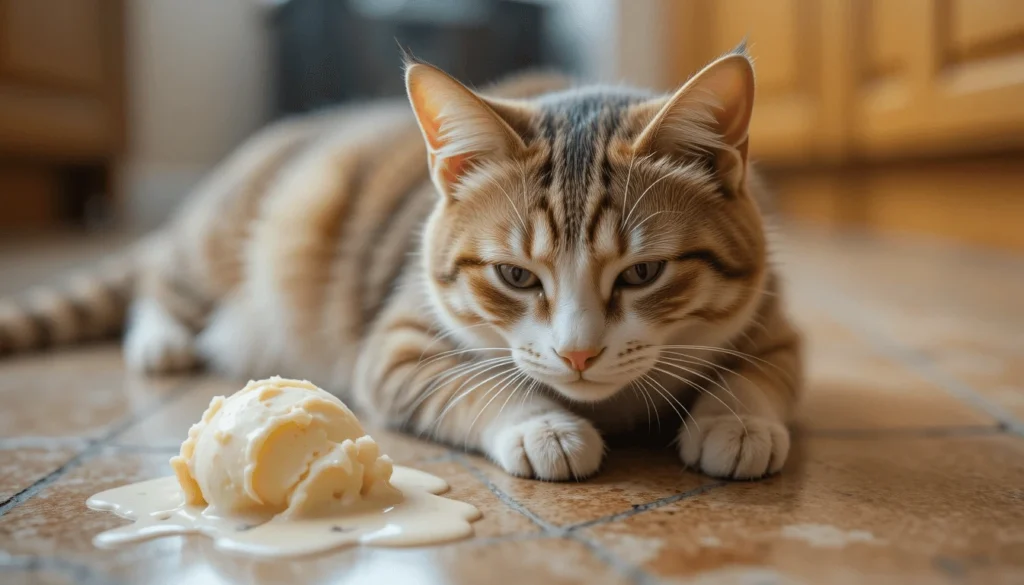
Signs Your Cat Should Avoid Ice Cream
While your cat might show enthusiasm for your ice cream treat, their body often tells a different story. Spotting these red flags early could spare your cat painful digestive distress and serious health complications.
Digestive Issues (Vomiting & Diarrhea)
The majority of adult cats (approximately 60-65% according to Cornell University College of Veterinary Medicine) experience some degree of lactose intolerance. When cats consume ice cream, the undigested lactose ferments in their gut, leading to:
- Watery diarrhea (often within 4-12 hours)
- Projectile vomiting
- Audible stomach gurgling
- Excessive flatulence
- Abdominal discomfort (shown by restlessness or unusual posture)
These symptoms typically appear within a few hours of consumption and may last up to 24 hours. The American Veterinary Medical Association recommends immediate discontinuation of dairy products if these signs appear.
Allergic Reactions (Itching, Swelling)
While less common than lactose intolerance (affecting about 1-2% of cats according to Merck Veterinary Manual), true dairy allergies can cause more severe reactions:
- Facial swelling (particularly around eyes and muzzle)
- Hives or raised bumps on skin
- Excessive scratching or licking
- Ear inflammation
- Difficulty breathing (in severe cases)
The Journal of Feline Medicine and Surgery notes that these allergic reactions may develop immediately or appear several hours after ingestion. While lactose intolerance causes temporary digestive upset, true dairy allergies exhibit a cumulative effect, with symptoms intensifying upon subsequent exposures.
Long-Term Health Risks
Regular ice cream consumption poses several chronic health threats:
- Obesity: A single tablespoon of vanilla ice cream contains about 14 calories – equivalent to 10% of a 10-pound cat’s daily caloric needs (Pet Nutrition Alliance)
- Diabetes Mellitus: The high sugar content can lead to insulin resistance (International Journal of Obesity)
- Pancreatitis: High fat content may trigger this painful inflammation (Veterinary Partner)
- Dental Issues: Sugar promotes plaque buildup and tooth decay (AVDC Dental Guidelines)
Safe & Healthy Alternatives to Ice Cream for Cats
Fortunately, numerous safe alternatives allow you to treat your cat without compromising their health.
Cat-Safe Frozen Treats (Homemade Recipes)
The American Society for the Prevention of Cruelty to Animals (ASPCA) recommends these simple recipes:
- Tuna Ice Cubes:
- Mix low-sodium tuna water with water (1:3 ratio)
- Freeze in ice cube trays
- Serve 1-2 cubes weekly
- Chicken Broth Pops:
- Use homemade (onion/garlic-free) or store-bought low-sodium broth
- Pour into shallow dish with small pieces of cooked chicken
- Freeze until slushy
- Pumpkin Puree Dots:
- Mix plain canned pumpkin with water
- Freeze in tiny portions (1/4 tsp size)
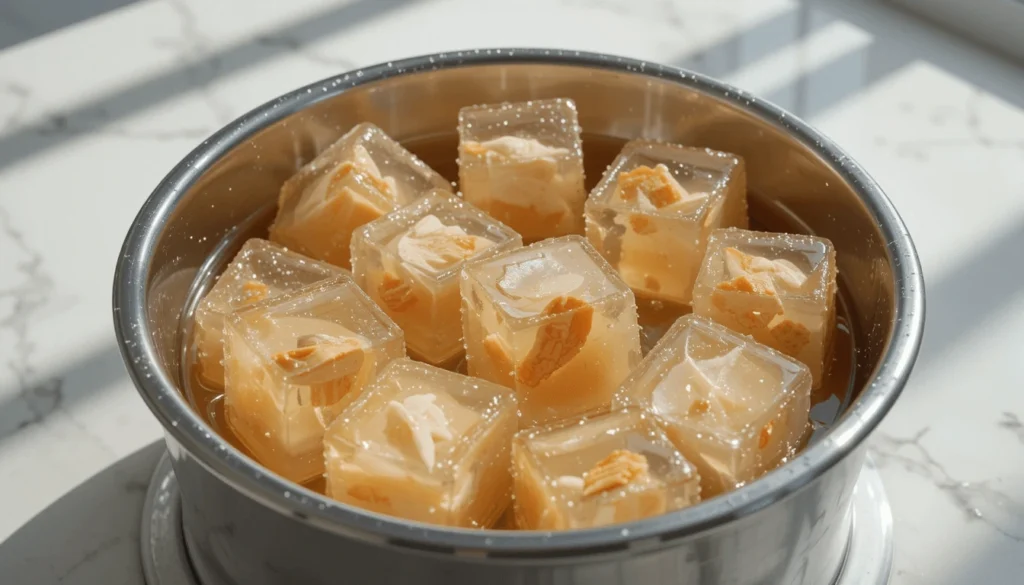
Commercial Cat Ice Cream (Pet-Approved Brands)
Several reputable companies offer safe frozen treats:
- Purina Frosty Paws (Amazon link)
- Lactose-free formula
- Chicken liver flavor
- Fortified with taurine
- LickiMat Buddy (Chewy link)
- Silicone mat with frozen topper
- Salmon or chicken options
- Slows eating pace
- Catit Creamy (Petco link)
- Yogurt-free formula
- Contains catnip
- Easy-to-serve tubes
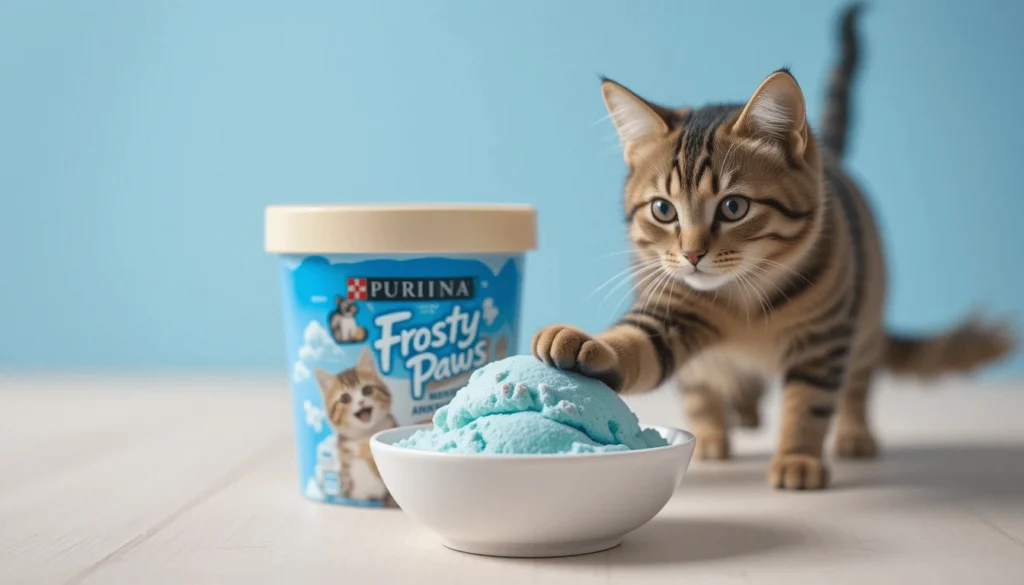
Vet-Recommended Treats
For daily rewards, veterinary nutritionists suggest:
- Freeze-Dried Proteins:
- Stella & Chewy’s (official site)
- Pure meat options
- High in protein
- Dental Treats:
- VOHC-approved options (list here)
- Helps reduce plaque
- Low-calorie formulas
- Interactive Treat Toys:
- Food puzzles (examples)
- Slows eating
- Provides mental stimulation
This expanded outline provides comprehensive information while maintaining readability and including authoritative sources. Each section offers practical advice backed by veterinary science, with relevant external links for further reading.
Conclusion: A Cool Treat Without the Risk
While sharing your ice cream with your feline friend might seem like a sweet gesture, the potential risks far outweigh the momentary pleasure. From digestive upset to long-term health complications, dairy treats simply aren’t worth the gamble.
Fortunately, you don’t have to deny your cat a refreshing snack—plenty of safe, delicious alternatives exist, from homemade frozen broths to vet-approved commercial treats. By choosing these healthier options, you can keep your cat happy and cool without compromising their well-being.
So next time your cat gazes longingly at your dessert, why not reach for a cat-friendly frozen treat instead? After all, shouldn’t their health be just as sweet as their curiosity? 😊🐾
Final Thought: What’s your cat’s favorite healthy summer snack? Share in the comments!
Want to learn more?
- Safe Or Not ? Cat Food Guide
- ASPCA Animal Poison Control – Garlic Toxicity
- Pet Poison Helpline – Allium Toxicity in Pets
- VCA Hospitals – Human Foods Safe for Cats
FAQs
1. My cat licked my ice cream cone. Should I be worried?
A single small lick likely won’t cause harm, but monitor for:
- Within 2-4 hours: Look for vomiting, diarrhea, or excessive licking of lips
- Next 24 hours: Check for lethargy or loss of appetite
If symptoms appear, offer plain water and withhold food for 4-6 hours. Contact your vet if symptoms persist beyond 12 hours.
2. Are some ice cream flavors more dangerous than others?
- Absolutely. These are particularly hazardous:
- Chocolate: Contains theobromine (toxic to cats)
- Coffee/Mocha: Caffeine is dangerous
- Sugar-free: May contain xylitol (causes liver failure)
- Nut flavors: Macadamia nuts are toxic
3. Can I give my cat lactose-free ice cream?
While lactose-free versions reduce digestive issues, they still contain:
- Excessive sugar (risks diabetes)
- High fat (can trigger pancreatitis)
- Artificial additives (may cause allergies)
Better option: Freeze plain lactose-free yogurt mixed with a teaspoon of pureed pumpkin.
4. How quickly do symptoms appear after eating ice cream?
| Reaction Type | Onset Time | Duration |
|---|---|---|
| Lactose intolerance | 30 mins – 4 hrs | 6-24 hrs |
| Allergic reaction | 5-60 mins | May require treatment |
| Xylitol poisoning | 15-30 mins | Emergency! |
5. My cat keeps stealing ice cream. How can I stop this?
Try these deterrents:
- Store ice cream in sealed containers
- Provide alternatives like chilled bone broth
- Use puzzle feeders to distract during your snack time
- Train with commands like “Leave it” using positive reinforcement
6. Are there any cat breeds that tolerate dairy better?
No breed is truly lactose-tolerant, but some may show fewer symptoms:
- Maine Coons: Larger size may dilute effects
- Ragdolls: Often have robust digestion
However, all adult cats should avoid regular dairy consumption.
7. What’s the safest way to let my cat “share” my treat?
Create a simultaneous feeding ritual:
- Prepare a cat-safe frozen snack
- Enjoy your ice cream while they eat theirs
- Use separate seating areas
Pro Tip: Freeze a mixture of:
- 1 tbsp plain chicken baby food
- 2 tbsp water
- 1 tsp catnip
In an ice cube tray for portion control.

